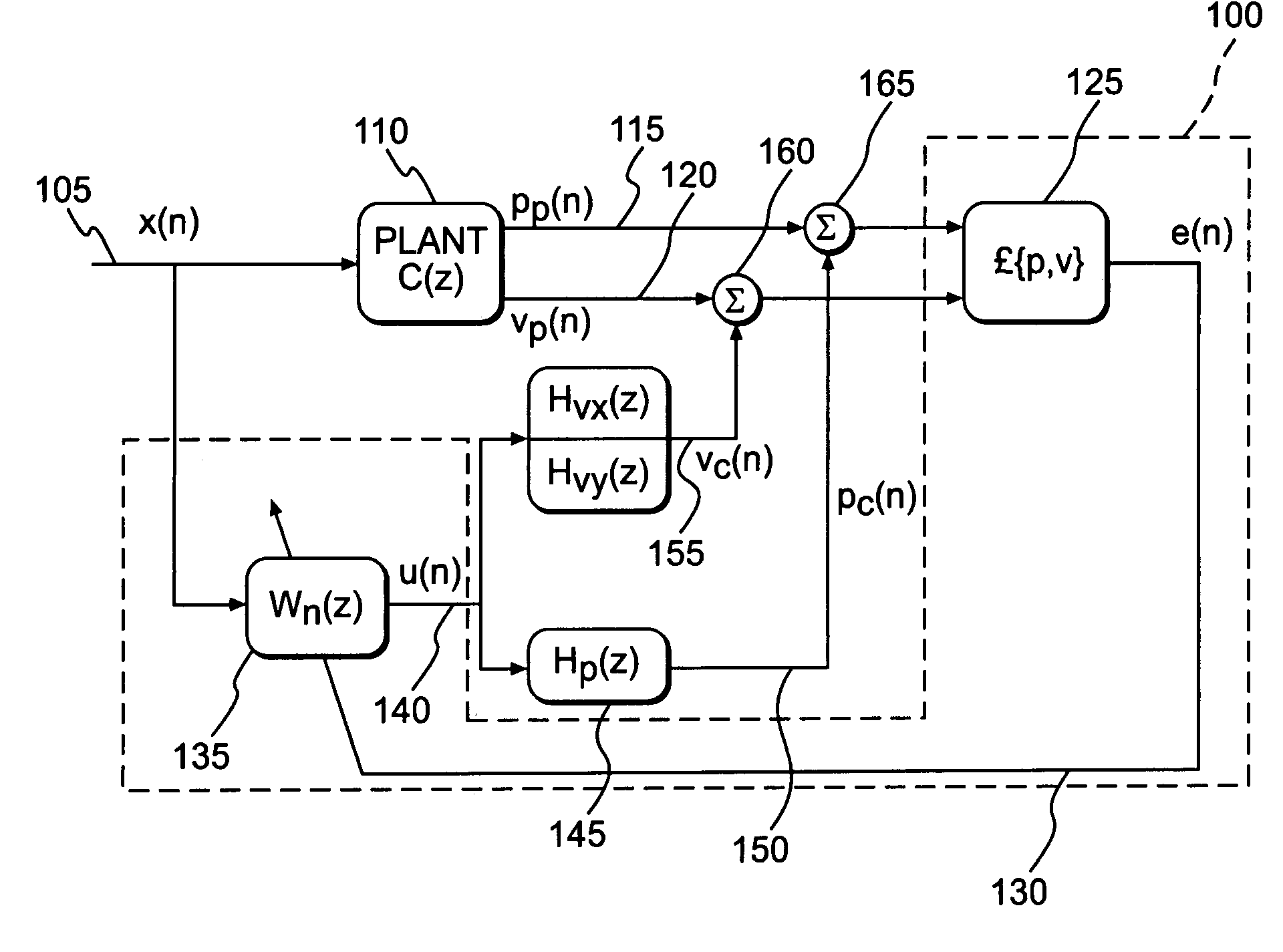Energy density control system using a two-dimensional energy density sensor
a control system and energy density technology, applied in noise generation, ear treatment, instruments, etc., can solve the problems of olson and may electronic sound absorber instability at higher frequencies, interference with operator vision, flexibility, comfort, etc., to reduce noise in an enclosure and minimize energy density
- Summary
- Abstract
- Description
- Claims
- Application Information
AI Technical Summary
Benefits of technology
Problems solved by technology
Method used
Image
Examples
Embodiment Construction
[0019]Reference will now be made in detail to the present exemplary embodiments, examples of which are illustrated in the accompanying drawings. Wherever possible, the same reference numbers will be used throughout the drawings to refer to the same or like parts.
[0020]Unlike energy density active noise cancellation systems that use a three-dimensional sensor to sense the energy density and provide the raw inputs for an error signal to a control system, the present system utilizes a two-dimensional sensor to provide an error signal to the control system. By mounting the two-dimensional sensor on or relatively close to a rigid surface within an enclosed space, such as a vehicle cabin, and orienting the acoustic sensors in a plane that is parallel to the rigid surface, the velocity component of the particle velocity in the direction normal to the rigid surface is known, i.e., zero. Thus, the inventors have discovered that a two-dimensional sensor may be used in place of a three-dimensi...
PUM
 Login to View More
Login to View More Abstract
Description
Claims
Application Information
 Login to View More
Login to View More - R&D
- Intellectual Property
- Life Sciences
- Materials
- Tech Scout
- Unparalleled Data Quality
- Higher Quality Content
- 60% Fewer Hallucinations
Browse by: Latest US Patents, China's latest patents, Technical Efficacy Thesaurus, Application Domain, Technology Topic, Popular Technical Reports.
© 2025 PatSnap. All rights reserved.Legal|Privacy policy|Modern Slavery Act Transparency Statement|Sitemap|About US| Contact US: help@patsnap.com



